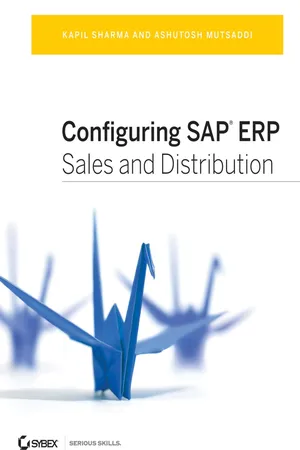Business
Managing Credit
Managing credit involves the process of granting credit to customers and ensuring that they pay their debts on time. It is important for businesses to have a credit policy in place to manage credit effectively and minimize the risk of bad debt. Effective credit management can improve cash flow and increase profitability.
Written by Perlego with AI-assistance
Related key terms
4 Key excerpts on "Managing Credit"
- eBook - ePub
- Brian W. Clarke(Author)
- 2018(Publication Date)
- Routledge(Publisher)
Assessment and Management of Credit RisksPassage contains an image
Burt Edwards (with contributions by Brian W Clarke)CHAPTER FIVE The Range of RisksObviously, companies expect to be paid when they sell on credit terms. Yet most companies write off some sales as uncollectable and suffer payment delays beyond agreed credit terms. These risks, and others, severely deplete net profits. Sometimes they cause sellers to close down or be sold off. This is a particular risk for those companies engaged in international trade.Credit management means the proper care of a company's largest and riskiest asset - accounts receivable, or trade debtors. At risk of erosion from the passage of time and unplanned events, receivables are the fragile provider of all the company's cash. Profit comes only from cash, so the events which delay or prevent receivables turning into cash need management at a senior level.Sadly, many companies just sell and wait to be paid. Most of the company failures of recent years have been those which concentrated on sales priorities, neglected their asset management and ran out of liquidity as a result. Successful companies know the importance of cash and pay adequate top-level attention to its fast generation. Their careful management of the business certainly includes the due diligence of identifying and Managing Credit risks.The Real Cost of Credit
In selling on credit terms, profit leakage must be minimized. Prices may include an assumed cost of the credit term, calculated at the seller's cost of money. But there are other costs which, if not avoided, must either be passed on to customers or absorbed by the seller via a reduction in the net profit before tax. - eBook - ePub
- Glen Bullivant(Author)
- 2016(Publication Date)
- Routledge(Publisher)
For many years, credit control or credit management was regarded in many businesses as simply the process of collecting debts. The less well informed may still hold this view, but in recent years the role of credit management has become significantly more extensively understood and appreciated. Although collection of funds remains one of the most important parts of the credit function, it is only a part.The aim of good credit management is the maximisation of profitable sales over the shortest acceptable period and with the minimum of bad debt losses. To put it another way, the basic objective is to protect the company’s investment in receivables or, in yet other words, to provide the best possible return for the company from the funds invested in accounts receivable (the debtors ledger).The five main areas of operation cover:- Assessment of credit risk: trying to find ways of accepting and controlling all business, including high-risk opportunities.
- Establishment of credit terms and limits: taking into account the risk involved and liaising closely with sales.
- Monitoring and control of debt: ensuring that agreed terms are adhered to, all high-risk customers are kept under control, and action is taken promptly to resolve any queries or disputes.
- Maintenance of the Sales Ledger: ensuring that the customer master file is up to date and accurate, and that payments and other adjustments have been applied promptly and accurately.
- Collection of payment: in a manner which creates the optimum cash inflow while at the same time ensuring continuity of business.
It will be seen that, while item 5 (collection of payment) remains a prime credit task, close attention to items 1 to 4 greatly improves collection prospects. It is usually seen in successful firms that the greater the attention at the ‘front end’ (1 and 2), the less activity is needed at the ‘back end’ (5). - eBook - ePub
- Kapil Sharma, Ashutosh Mutsaddi(Authors)
- 2010(Publication Date)
- Sybex(Publisher)
Chapter 11: Credit ManagementLong-outstanding, uncollectable receivables are never good for the financial health of an organization. If a customer defaults on paying outstanding amounts by the end of the allowed payment term, the company needs to monitor that customer’s allowed credit more closely in future transactions. The credit and risk management function in an organization is therefore responsible for creating policies and exercising continuous control in order to minimize credit risks. The Credit Management application in SAP allows you to map your organization’s credit policies at various stages of the order to the cash cycle such that the policies act as the determining rules and help in controlling the credit decision-making process.In this chapter, we will cover how the credit management functionality available in the SAP SD application supports the credit management function in an organization. We will discuss the concepts of credit management, look closely at customization, and show you the process/setup with the help of the settings we have created for our imaginary company, Galaxy Musical Instruments.Introducing Credit Management in SAPSAP Credit Management is an application that helps organizations monitor, evaluate, and control credit situations and credit allocations. It allows you to grant credit terms to your customers and also perform credit checks on the sales transactions. When you implement Credit Management in your SAP instance, you map your organization’s credit policies into the Credit Management application. Customers are aligned with these credit policy rules on the basis of the information collected from various sources, such as the customer’s past transactional history, the customer’s credit reports available from credit agencies like Dun & Bradstreet (D&B), the customer’s financial stability in the market, the geographical and political situations of the regions where the goods are sold, and so on. Each credit-related sales transaction is then monitored and evaluated with respect to these rules or policies, and the results of the evaluation help your organization decide whether to sell the goods on credit. - eBook - ePub
The Guide to Getting Paid
Weed Out Bad Paying Customers, Collect on Past Due Balances, and Avoid Bad Debt
- Michelle Dunn(Author)
- 2011(Publication Date)
- Wiley(Publisher)
Another law, called The Fair Credit Reporting Act (FCRA), originally passed in 1970, was designed to promote accuracy and ensure the privacy of the information used in consumer credit reports. This law ensures that consumers have access to information about them that lenders, insurers, and others obtain from credit bureaus and use to make decisions about providing credit and other services. The FCRA also requires that users of credit reports (which would be you if you wanted to check credit through use of credit reports) have a “permissible purpose” to obtain them. It also mandates that credit reporting agencies maintain the security and integrity of consumer files, and allows consumers to limit certain uses of their reports. Your “permissible purpose” would be to extend credit—thus the importance of a signed credit application.WHY SHOULD YOU HAVE A CREDIT MANAGEMENT PLAN? There are so many reasons you need this. A credit management plan, for example, does the following things:- Provides timely notification to your customers regarding any past-due amounts, therefore eliminating old balances from being carried as receivables.
- Outlines a procedure that will provide your customers with options when they cannot pay in full or on time.
- Establishes a procedure on when and what to do with small balances on customers’ accounts.
- Enables you to adequately provide reasonable credit limits for customers with revolving credit accounts.
- Sets guidelines to legally collect money due to your company that was lost because of bad checks.
- Establishes a system that will maintain timely contact with your customers when their accounts are past-due. It also provides a procedure that enables your business to keep credit card numbers and checking account information on file for customers and automatically charge them when they place an order or for scheduled monthly or weekly payments.
- Makes your business aware of when an account should be placed for collection and thereby helps you avoid carrying bad debts on the receivables.
- Eliminates orders being held for nonpayment and will better service customers in a timely manner.
- Alerts you as to when to write off a balance to bad debt.
Having a credit management plan in place can help your business be successful, make more money, and more sales. Credit has traditionally been used to allow individuals to live beyond their means, or because some are not dedicated enough to save money for something that they want now
Index pages curate the most relevant extracts from our library of academic textbooks. They’ve been created using an in-house natural language model (NLM), each adding context and meaning to key research topics.



